
Ghostbusters is a licensed game by Activision based on the film of the same name. It was designed by David Crane and released for several home computer platforms in 1984, and later for video game console systems, including the Atari 2600, Master System and Nintendo Entertainment System. The primary target was the Commodore 64 and the programmer for the initial version of the game was Adam Bellin. All versions of the game were released in the USA except for the Amstrad CPC and ZX Spectrum versions, which were released only in Europe, and the MSX version, which was released only in Europe, South America, and Japan.
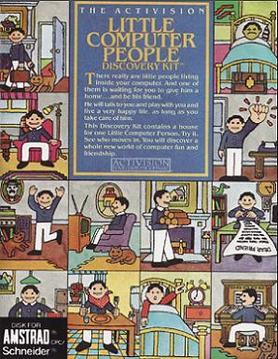
Little Computer People, also called House-on-a-Disk, is a social simulation game released in 1985 by Activision for the Commodore 64, ZX Spectrum, Amstrad CPC, Atari ST and Apple II. An Amiga version was released in 1987. Two Japanese versions were also released in 1987, a Family Computer Disk System version, published in Japan by Disk Original Group (DOG) a subsidiary of Square, and a PC-8801 version.

Underwurlde is a 1984 action-adventure platform video game in the Sabreman series by Ultimate Play the Game for the ZX Spectrum and Commodore 64. The player controls the adventurer Sabreman as he jumps between platforms in a castle and its caverns to find an escape past the exit guardians. Underwurlde features about 600 flip screen areas. Unlike other games of its time, Sabreman is not injured when touched by enemies and is instead knocked backwards. Underwurlde is the second game in the series, between Sabre Wulf and Knight Lore, and released shortly before the latter for the ZX Spectrum in late 1984. Another developer, Firebird, ported the game to the Commodore 64 the next year.
Elite Systems is a British video game developer and publisher established in 1984 as Richard Wilcox Software. It is known for producing home computer conversions of popular arcade games. Elite also published compilations of games on the Hit-Pak label and budget price re-releases on the Encore label.

CRL Group plc was a British video game development and publishing company. Originally CRL stood for "Computer Rentals Limited". It was based in King's Yard, London and run by Clem Chambers.
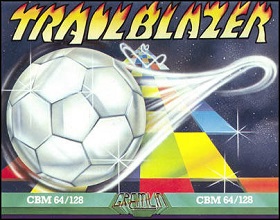
Trailblazer is a racing video game developed by Mr. Chip Software and published by Gremlin Graphics for the ZX Spectrum, Commodore 64, Atari 8-bit computers, Amstrad CPC, Commodore 16 and Plus/4 in 1986. It was ported to the Amiga and Atari ST.
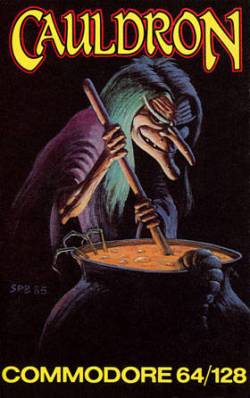
Cauldron is a video game developed and published by British developer Palace Software in 1985 for the ZX Spectrum, Commodore 64, and Amstrad CPC home computers. It contains both platform game and horizontally scrolling shooter sections. Players control a witch who aims to become the "Witch Queen" by defeating an enemy called the "Pumpking".
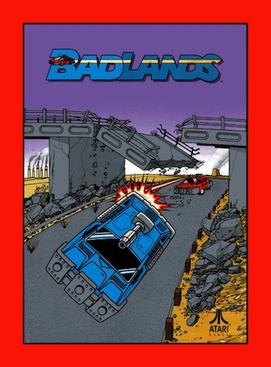
Badlands is a 1989 arcade video game published by Atari Games. It was ported by Domark under the Tengen label to the Amiga, Amstrad CPC, Atari ST, Commodore 64, and ZX Spectrum. The game is a re-themed version of Atari's previous racing games Super Sprint and Championship Sprint with the addition of vehicular combat. Badlands is set in the aftermath of a nuclear war and races around abandoned wastelands with many hazards. Three gun-equipped cars race around a track to win prizes.

Spindizzy is an isometric video game released for several 8-bit home computers in 1986 by Electric Dreams Software. It combines action and puzzle video game elements. Players must navigate a series of screens to explore a landscape suspended in a three-dimensional space. Development was headed by Paul Shirley, who drew inspiration from Ultimate Play the Game games that feature an isometric projection.

Shadow Dancer is a side-scrolling hack-and-slash action game produced by Sega and originally released as an arcade game in 1989. It is the second and the final arcade game in the Shinobi series, following the original Shinobi itself. The player controls a ninja aided by an attack dog, who is fighting to save the city from a terrorist organization.

Knightmare is a video game released by Activision in 1987 for ZX Spectrum, Amstrad CPC, Commodore 64, and Atari ST. It was written by Mev Dinc, J.P. Dean, E.M. Dean and Nick Cooke, and is based on the Anglia Television show Knightmare. Four years later, Mindscape released entirely different game based on the show, also called Knightmare, for the Atari ST and Amiga.

Aliens: The Computer Game is a 1986 video game developed by Software Studios and published by Electric Dreams Software initially for Amstrad CPC, Commodore 64 and ZX Spectrum. It is based on the film of the same title. Ports for the Commodore 16 and MSX were developed by Mr. Micro and published in 1987.
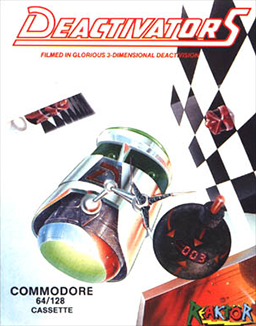
Deactivators is a 1986 puzzle video game designed by David Bishop and Chris Palmer, developed by Tigress Marketing and System Software, and published by Ariolasoft's action game imprint Reaktor. The player controls bomb disposal robots known as deactivators and must use them to deactivate bombs planted by terrorists in five research complexes. The concept for the game came from a brainstorming session between Bishop and Palmer; its design and development took five to six months to complete. It was released for the Amstrad CPC 464, Commodore 64, and ZX Spectrum platforms in October 1986.
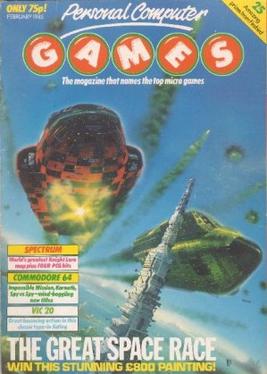
Personal Computer Games was a multi-format UK computer games magazine of the early/mid-1980s published by VNU.

Enduro Racer (エンデューロレーサー) is an arcade racing game from Sega. It was released in 1986 with two arcade cabinet versions, a stand-up cabinet with handlebars and a full-sized dirt bike cabinet. It is often seen as a dirt racing version of Hang-On, as it uses a similar engine and PCB. The game was later released for the Master System in 1987, the ZX Spectrum and Commodore 64 in 1988, and the Amstrad CPC and Atari ST in 1989.
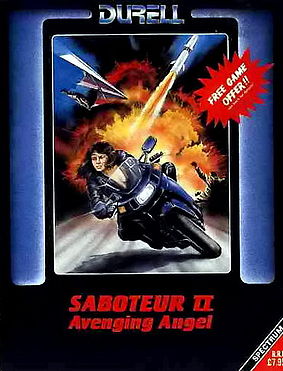
Saboteur II: Avenging Angel, also known as Saboteur 2, is an action-adventure game created by Clive Townsend and released by Durell Software in 1987 for the ZX Spectrum, Amstrad CPC, Commodore 64, and MS-DOS compatible operating systems. A sequel to 1985's Saboteur, the player controls a sister of Ninja from the first game on a mission to avenge his death. Saboteur II was one of the first action-adventure games with a female protagonist and was well received by critics.

Light Force is a 1986 vertically scrolling shooter designed by Greg Follis and Roy Carter, developed by their company Gargoyle Games, and published under their Faster Than Light imprint. It was released for the Amstrad CPC, Commodore 64, and ZX Spectrum platforms.
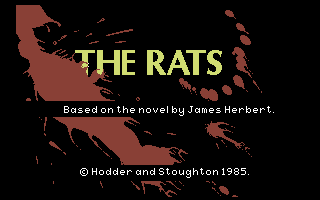
The Rats is a survival horror text adventure for the Commodore 64 and ZX Spectrum computers. It is based on the 1974 novel The Rats by James Herbert. The game was programmed by GXT, and published by Hodder & Stoughton, who were the publishers of James Herbert's book The Rats. An Amstrad CPC version was planned, but was never released.
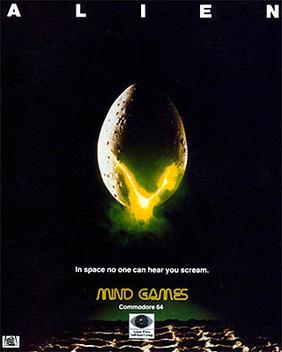
Alien is a 1984 hybrid strategy/adventure video game developed by Concept Software and published by Argus Press Software for the Commodore 64 and ZX Spectrum, and later ported for the Amstrad CPC in 1985. It is based on the science fiction horror film Alien.
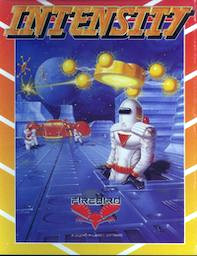
Intensity is a 1988 action game designed by Andrew Braybrook, developed by Graftgold, and published by Firebird Software. It was released for the Commodore 64 and ZX Spectrum platforms.



















